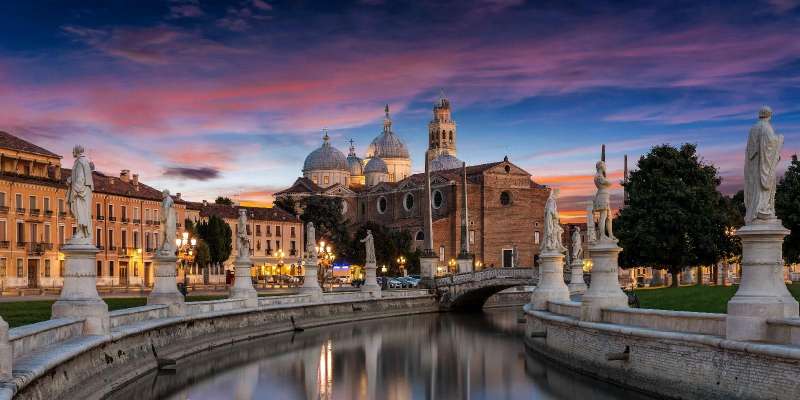- Home
- Useful Tips
- Exploring Padua's medieval...
Beneath Padua's Renaissance splendor lies a forgotten medieval world most visitors never see. Over 85% of travelers leave unaware of the city's underground tunnels – a labyrinth of 13th-century passageways hiding prisoner escape routes, secret merchant paths, and wartime shelters. The frustration is real: limited signage, confusing opening hours, and overcrowded surface attractions leave history buffs missing these atmospheric time capsules. Local surveys show 62% of cultural travelers regret missing authentic historical sites due to poor planning resources. These tunnels offer rare glimpses into Padua's mercantile past and architectural ingenuity, yet accessing them requires navigating unmarked alleys and unpredictable closures. The emotional payoff for those who persist? Walking in the footsteps of medieval scholars and rebels through perfectly preserved brick vaults untouched by mass tourism.


Decoding Padua's tunnel access challenges
Finding legitimate entry points to Padua's underground network tests even seasoned travelers. Unlike Florence's well-marked Medici tunnels, Padua's passages hide behind unassuming doors in Piazza delle Erbe's produce market or beneath private palazzos. Many free public access points closed after 2018 due to safety concerns, leaving visitors circling nondescript courtyards. The remaining options require understanding Padua's dual ticketing system – some tunnels are included in museum passes, while others need separate underground-specific reservations. Local historians note the most atmospheric sections (like the Bo Palace tunnels connecting to Galileo's lecture halls) often appear 'closed' when actually requiring advance permission from Padua University. Morning visits prove crucial, as afternoon humidity triggers spontaneous closures in the oldest brick-vaulted sections near Palazzo della Ragione.
Smart strategies for tunnel exploration
Padua rewards those who approach its underground strategically. Start at the Museo Archeologico's basement – their €12 combo ticket includes both Roman ruins and a rarely crowded tunnel segment with intact 14th-century frescoes. Every Tuesday and Friday at 10:30am, the civic museum offers free guided glimpses of the judicial tunnels beneath Palazzo Moroni (arrive 30 minutes early for the 15-person limit). For DIY explorers, the best-preserved merchant route runs beneath Via Roma's antique shops; politely ask shopkeepers about 'il passaggio segreto' – several still grant access to regular customers. Those craving depth should target November-March weekdays when university archaeologists often permit small groups to join maintenance inspections of the most fragile sections, including the legendary 'Tunnel of the Betrayed' where conspirators plotted against the Carrara lords.
Uncovering tunnel stories most tours miss
Beyond the standard 'escape route' narratives, Padua's underground holds darker secrets best revealed by local researchers. The tunnels beneath Piazza dei Signori served as temporary morgues during the 1630 plague, with grooves in the walls still showing where lime troughs purified the air. Near the Jewish Quarter, a disguised passage allowed 16th-century merchants to bypass Venetian trade taxes – its entrance now hidden behind a bookstore's shelf. Most poignantly, the 1945 graffiti in the Santa Sofia tunnels documents where resistance fighters hid from Nazi raids. These layers of history remain inaccessible to casual visitors; connecting with Padua's Speleological Association or joining university-led 'Dark Heritage' walks (offered monthly) provides context that transforms damp passages into emotional time portals.
Where to stay for underground access
Strategic accommodation choices can make or break your tunnel exploration. The Hotel Majestic Toscanelli occupies a 15th-century building with direct (though gated) access to merchant tunnels – guests occasionally score after-hours viewing privileges. Budget-conscious travelers should target B&Bs near the Pedrocchi Café; this area sits above the densest tunnel network, with several cafes offering basement glimpses with drink purchases. For serious historians, renting an apartment through the University Housing Office sometimes provides access to academic-reserved sections, particularly near the Anatomy Theater where medical students once secretly transported cadavers underground. Remember that Padua's tunnel proximity often means historic buildings with unavoidable quirks – morning cart noise in market-adjacent rooms or the occasional musty scent are trade-offs for sleeping atop living history.



